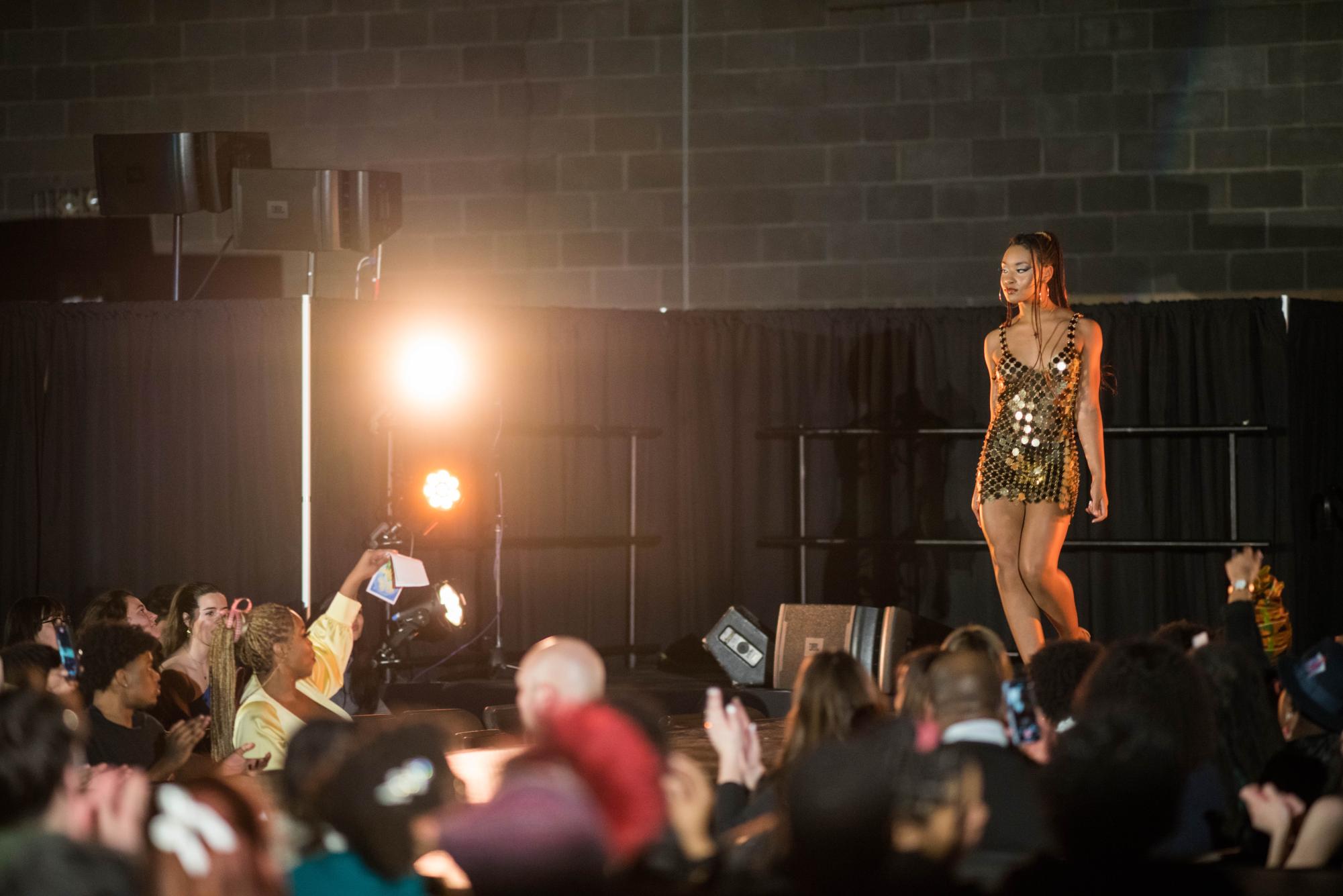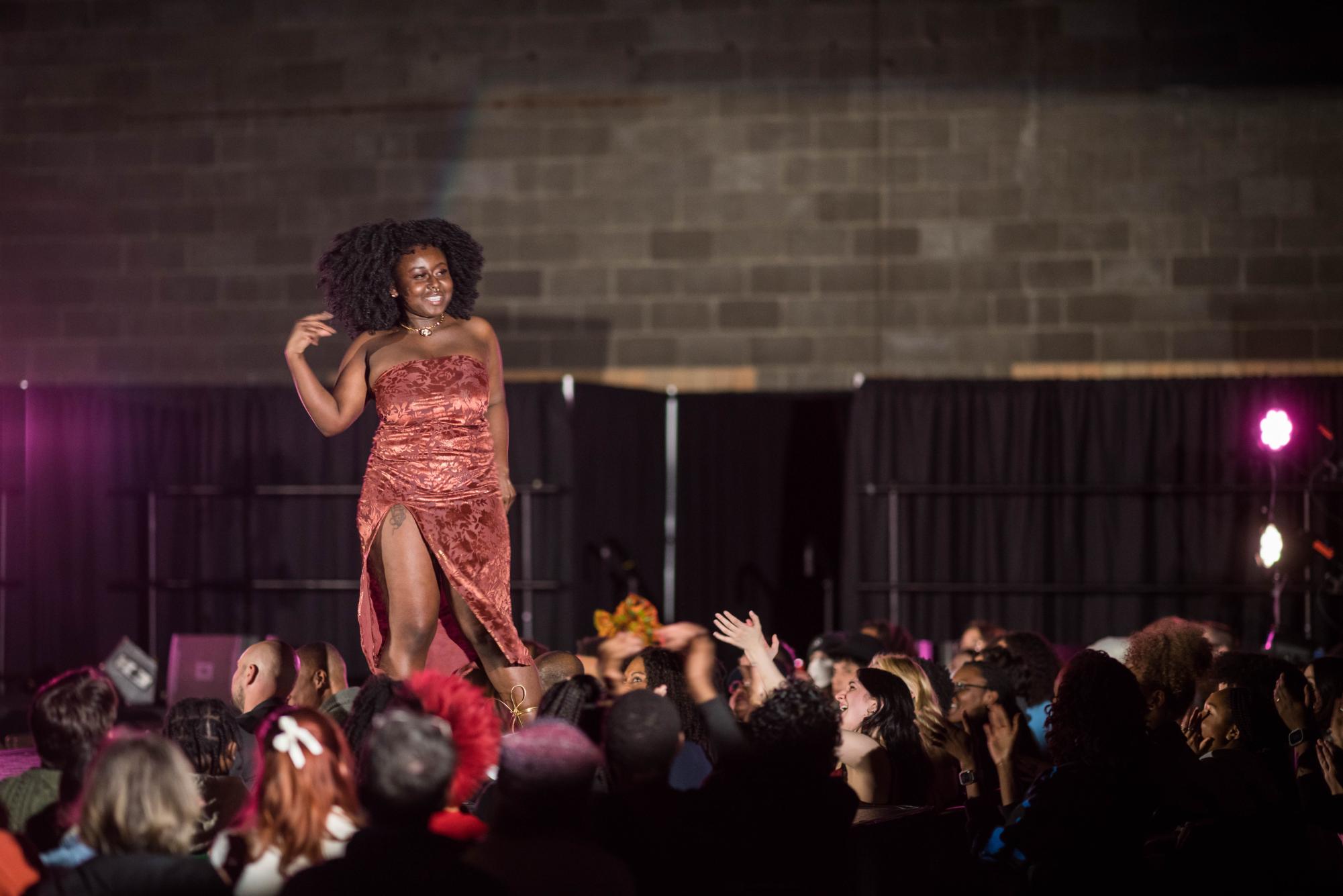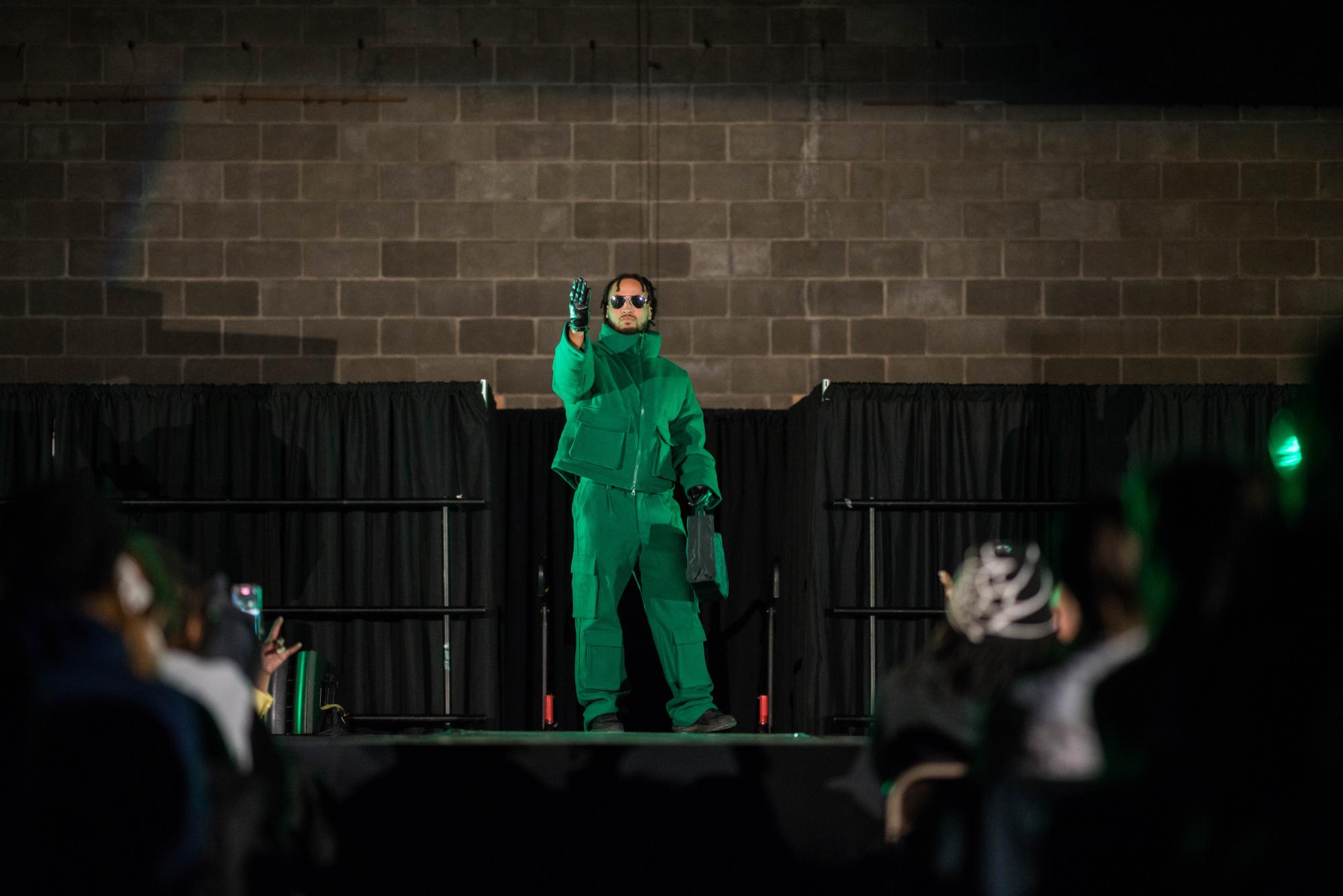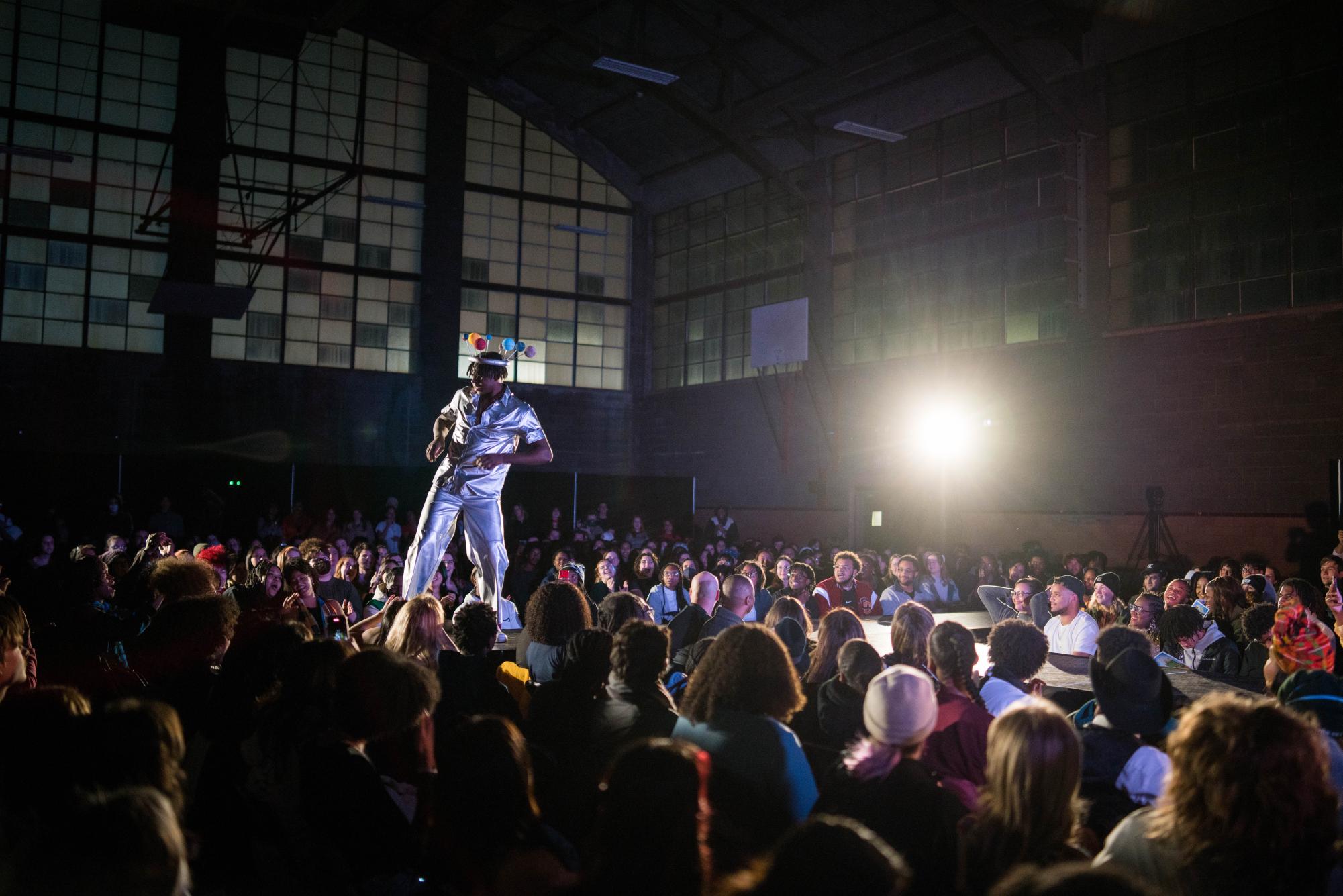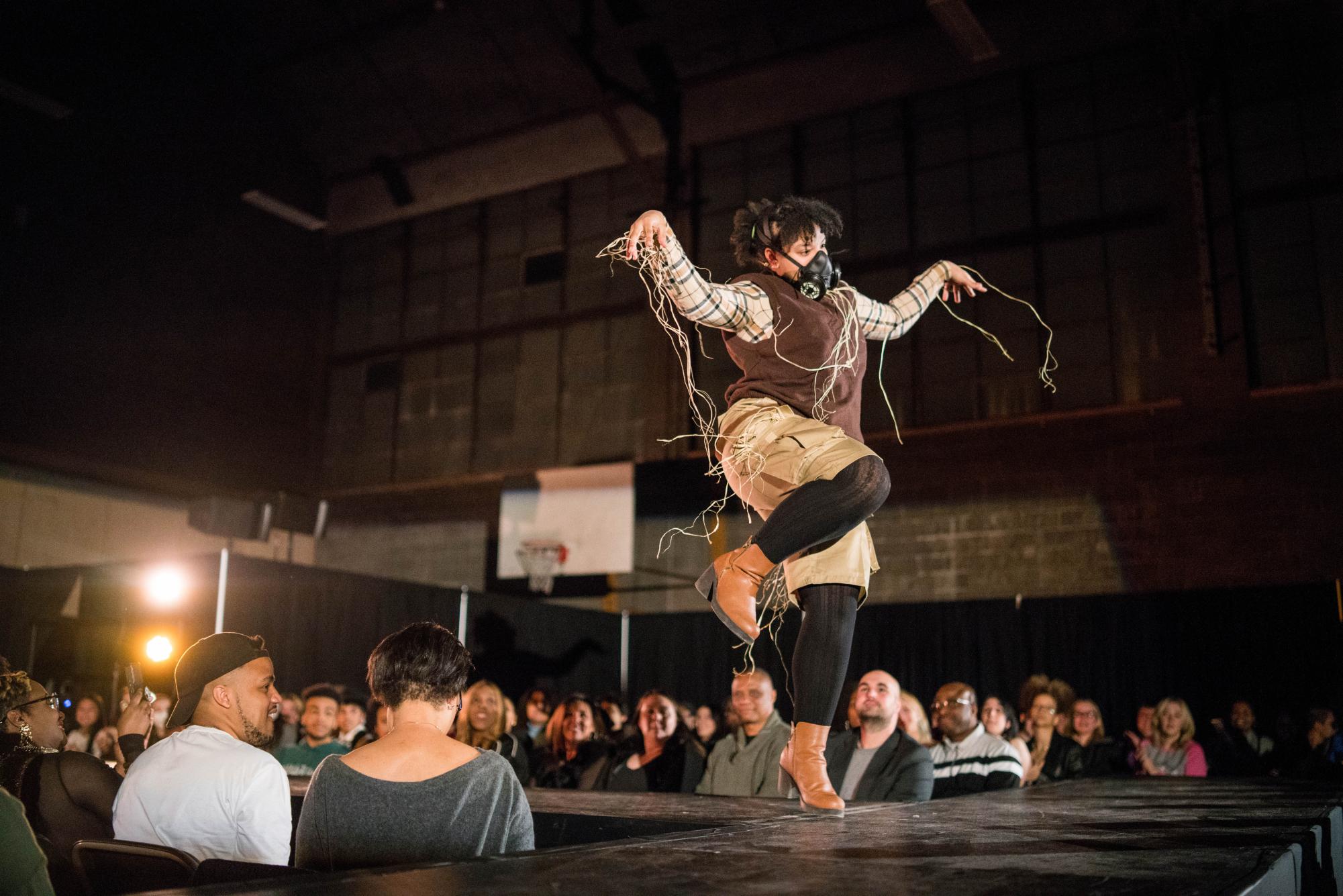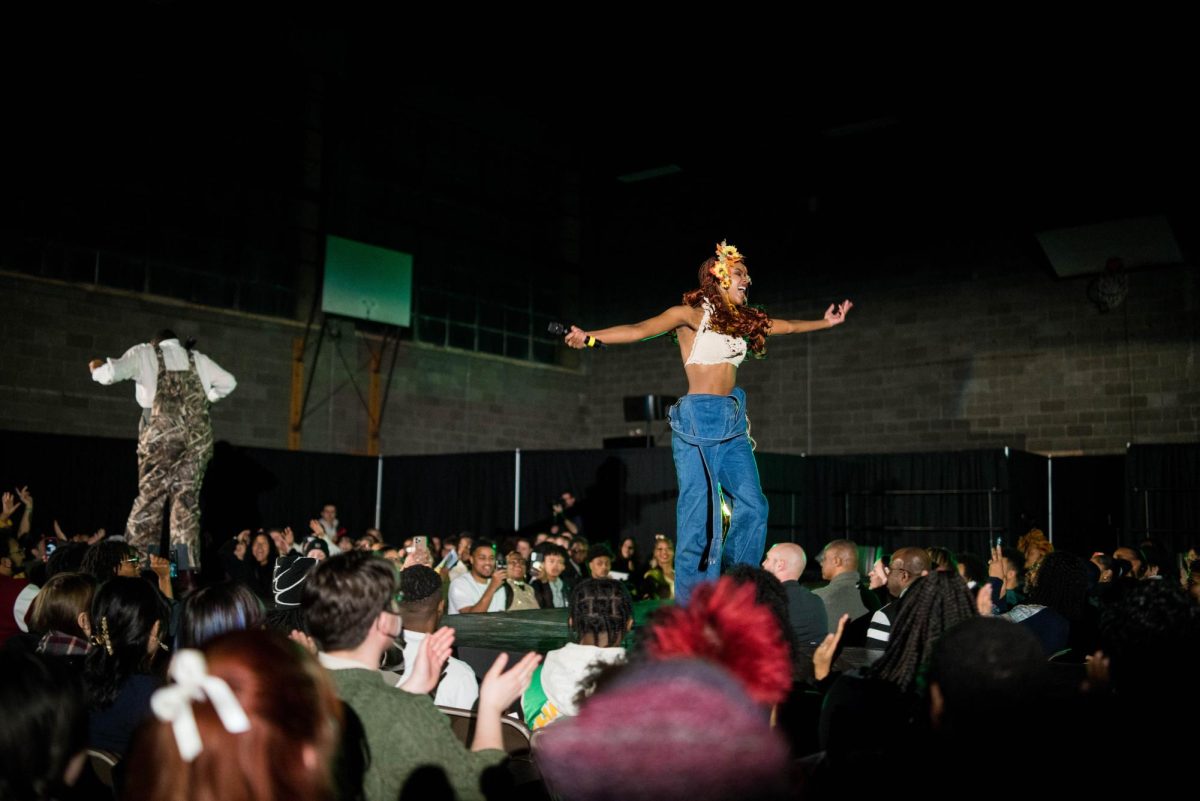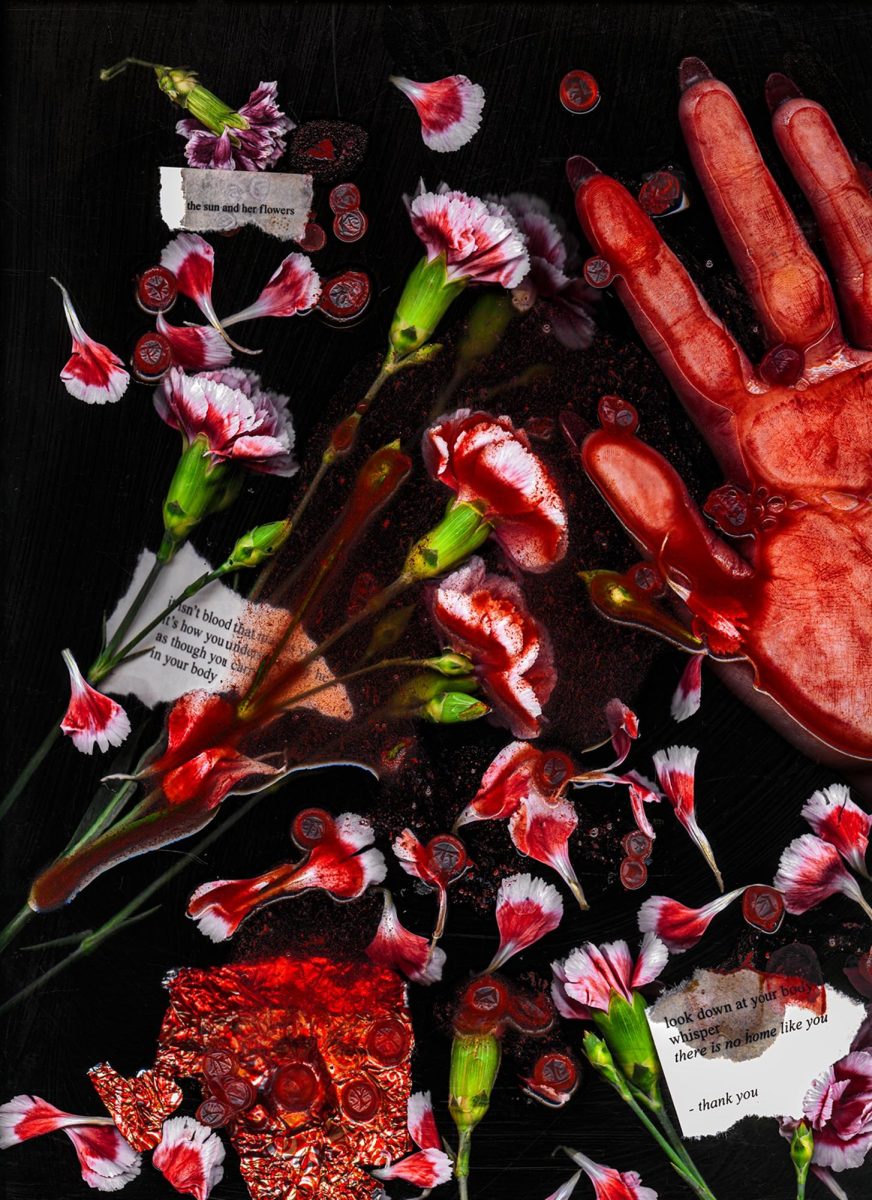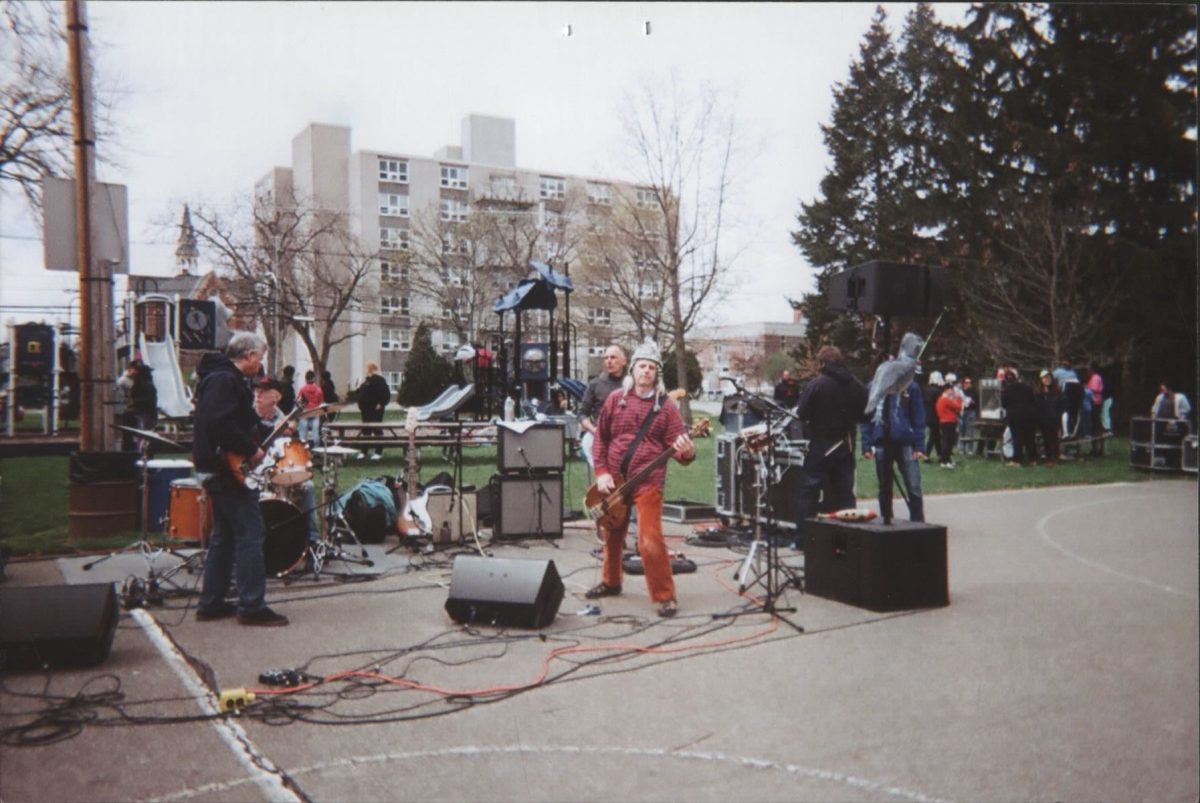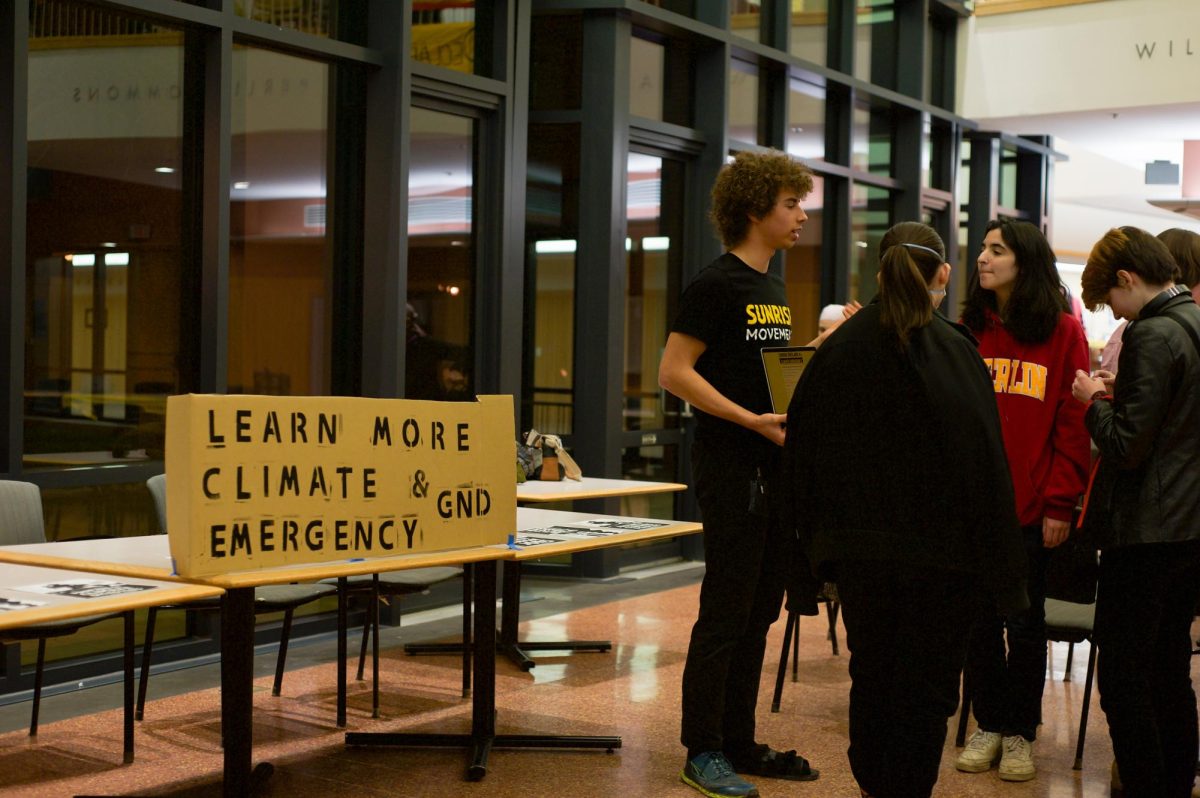The Black History Month Fashion Show is one of the main events that I participated in during Black History Month at Oberlin. During my first year, I had little to no idea it was happening until the start of the second semester. Because of that, I acted as a fly on the wall during the show, helping models change into costumes and poking my head through the curtain to see the crowd roar as people walked down the catwalk. I knew then that I was going to model next year.
In my second year, I was the first person to arrive at the initial fittings during the fall semester. When February came around, I was prepared to walk. I still remember strutting on stage for the first time, sporting a tie-dye jacket and custom deconstructed slacks, and the crowd’s energy as it burst into applause and screams. When this year rolled around, I found myself wanting to be more involved with the fashion show, especially behind the scenes. I mentioned my interest to some committee members and was quick to offer up my service as a costume designer.
Meetings and planning for the show started up in late September, with the committee going over themes, financing, and the location for the show itself. The Wiz was going to be the theme of the show, as the musical is currently doing a pre-Broadway tour before hitting Times Square.
The Wiz has always been my favorite musical. As a kid, my family and I used to pull out the CD and watch it during the winter, a memory which I hold close to my heart. I knew all the songs by heart and was enamored with the costumes. When asked what I wanted to design, I offered up my services for the Emerald City lines — Green, Red, and Gold. Much to my delight, the committee was happy to bring me on as the sole designer for the Red line. I created countless Pinterest boards and shopped for pieces for my line, which took up the better part of the semester. By the time Winter Term hit, I had design ideas for 10 models and was eager to get started once February hit.
It’s important to note that while I was at home, the executive board of the fashion show committee was hard at work. They spent Winter Term developing the costumes for the other eight lines. College fourth-year Divine McAllister and College second-year Mia Knox came up with not only the concepts for multiple lines and costumes but designs for their own lines as well. College fourth-years Alyson Jefferson and Wyae’ Stewart handled the logistics for the fashion show as well as helping with lines. College fourth-year Bour Opoku worked into the night to show me the various makeup looks she planned to design for the models, and ended up doing makeup and hair for nearly every model in the show.
Throughout this process, the former faculty-in-residence of Afrikan Heritage House Candice Raynor helped guide them and gave tips drawn from her experience. During the frigidity of January, this group figured out who would do sound and lights, help backstage, take photos, and even find an entirely new location. The fashion show is usually held in the Carnegie Building Root Room, but construction forced the committee to find an entirely new space and completely rework logistics this year. Without this work, my line would have never seen the light of day, and I am eternally grateful for all the time and effort the committee put in to create a show I could be a part of.
By the time I got back to campus, we were two and a half weeks away from the show. The same day my feet landed on Oberlin soil, I was working hard in the Edmonia Lewis Center for Women and Transgender People crafting pieces for the Red Line. I struggled to get going at first, scared to make the first cut or glue on the first gem, but the encouragement of my peers allowed me to start putting together full pieces for the models. It was never easy and I spent many late nights rethinking my original designs. On top of starting class and my other responsibilities, there were plenty of nights where I was missing my bed and dreading the cold walk back to my house. However, those times were all overshadowed by the laughter, food, and singing while working on the show.
One of the best things about Black History Month is that I am able to spend so much time devoted to a common goal with my Black peers. We all have busy schedules outside of Black History Month, so having shared time together is truly special. Being around so many Black writers, designers, musicians, and artists is especially amazing. I often found myself being a part of deep conversations about our lives outside the fashion show, creating a bond built on trust, community, and love, not only for each other but for the show we were building with one another.
Before I could even blink, it was almost Feb. 17. The day before, I helped the committee drag all 90 of the fashion show outfits to Hales Gymnasium. There, we set up makeup stations, accessories, wigs, fitting rooms, and more to ensure the show ran smoothly. At that point, we were all starting to feel the toll from working so hard, with some of us even falling ill as a result. Because of this, I was asked to sing “Ease On Down the Road” with College third-year Ezra Pruitt — something neither of us expected, especially on top of walking and helping out with other lines. To say I was nervous would be an understatement, but I did not hesitate to leap in and help. By the time the chairs had filled up, we had practiced for about 10 minutes before racing to get into costumes. All of the models and the committee members watched from the Cat in the Cream TV as the chairs filled up with our peers, parents, professors, and even President Carmen Twillie Ambar herself. I got text messages from my grandma in Washington, D.C., and alumni in New York City wishing me good luck as I stood in line waiting to walk in the March of the Dorothys line, dressed in a sapphire-blue gown.
There is nothing as enjoyable and exhilarating as being out on stage. To be fair, this is coming from a former theater kid, but the rush you get from walking down the runway is unforgettable. It was amazing to experience the audience’s screams and claps while walking down the aisle. Then, just like that, it’s over. It’s a peculiar feeling when months of work come down to only seconds on stage. When looking at the legacy of the fashion show and how many people show up every year to support us, you come to realize the importance of the work that goes in.
I don’t have enough space to write about all of the things the Black History Month Fashion Show accomplished: for one, Dae Williams, OC ’20, and another group of students worked on a documentary showcasing the entire process of the Fashion Show and the Black students who worked on it. I wish I could go in depth to talk about the Fashion Show After Party, where the costumes worn were sold, and the proceeds were given to the Sickle Cell Association of Antigua and Barbuda.
The Black History Month Fashion Show has always been about the power of Black art and culture. It spotlights how Black people at Oberlin express themselves. That expression serves to empower the Black community on campus, who do so many wonderful and amazing things every day. Even as a first-year, I was inspired by my peers’ work. It gave me the confidence to try new things and create my own work this year. I hope that the first-years who were in it this year continue to uphold this legacy, and I indeed will next year.
